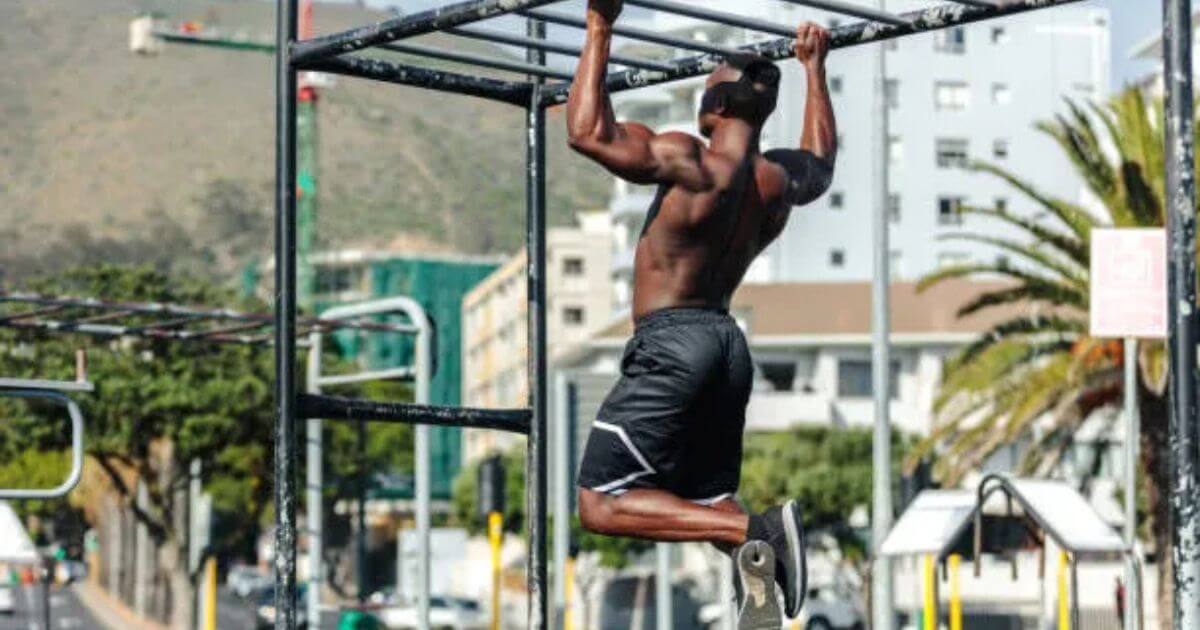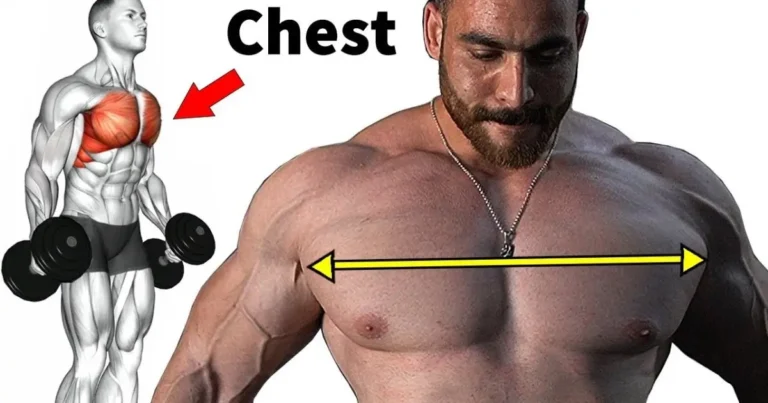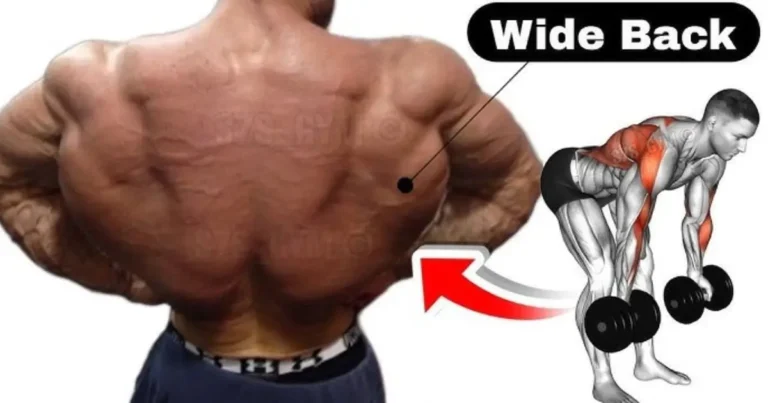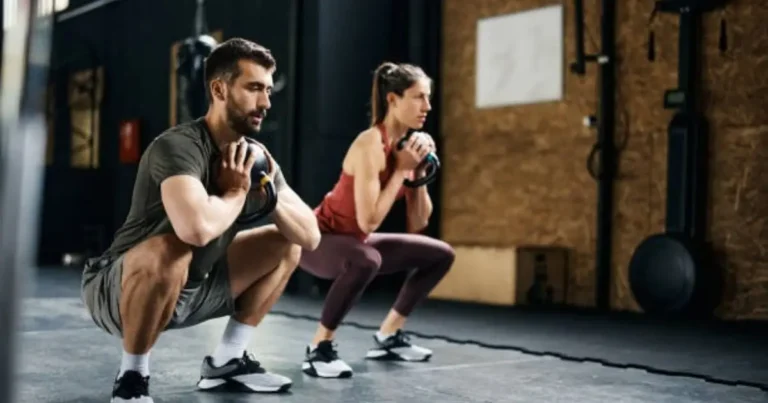The Ultimate Calisthenics Back Workout (Build Strength & Muscle at Home)
Looking to build a powerful, well-defined back without access to a gym full of weights? A strategic calisthenics back workout might be exactly what you need. Using nothing but your bodyweight and minimal equipment, you can develop impressive back strength, improve your posture, and sculpt a v-tapered physique that stands out.
Most people mistakenly believe that building a strong back requires heavy weights and specialized machines. However, a well-designed calisthenics back workout can be just as effective—if not more so—for developing functional strength and muscle. The key lies in understanding proper progression techniques and exercise selection to continuously challenge your back muscles.
In this comprehensive guide, we’ll explore the most effective bodyweight exercises for back development, provide structured calisthenics back workout routines for all fitness levels, and share strategies to ensure steady progress in your pull up workout journey.
Table of Contents
Understanding Your Back Muscles (Simplified Anatomy)

Before diving into specific exercises, it’s helpful to understand the key muscles you’ll be targeting with your calisthenics back workout:
| Muscle Group | Location | Function | Key Exercises |
| Latissimus Dorsi (Lats) | Large wing-like muscles on either side of your back | Pulling arms downward and inward | Pull-ups, chin-ups |
| Trapezius (Traps) | Diamond-shaped muscle across upper back | Shoulder blade movement, neck support | Inverted rows, scapular retractions |
| Rhomboids | Between shoulder blades | Pulling shoulder blades together | Australian pull-ups, face pulls |
| Rear Deltoids | Back of shoulders | Horizontal pulling, shoulder stability | Wide rows, reverse flyes |
| Erector Spinae | Running along spine | Back extension, spinal support | Superman holds, back extensions |
Understanding these muscle groups helps you connect with the working muscles during your calisthenics back workout and ensures balanced development across your entire posterior chain.
Essential Calisthenics Back Training Principles
Focus on Form
When performing any calisthenics back workout, proper form is non-negotiable. This is especially crucial for protecting your spine and shoulder joints during pulling movements:
- Maintain neutral spine alignment
- Control each repetition (avoid swinging or kipping)
- Use full range of motion when possible
- Focus on initiating movements with your back muscles, not arms
Pro Tip: Record yourself occasionally to check your form, especially during pull up workout sessions. Side-angle videos can reveal form issues you might not feel during execution.
Progressive Overload
Unlike weight training where you can simply add plates, calisthenics back workout progression requires more creativity:
- Increase volume: Add more reps or sets
- Modify leverage: Change body angle to increase or decrease difficulty
- Alter tempo: Slow down movements, especially the lowering phase
- Add pauses: Hold positions at points of maximum tension
- Advanced variations: Progress to harder exercise versions
- Add resistance: Use weight vests or resistance bands for additional challenge
Understanding these progression principles is crucial for continued improvement in your pull up workout routine.
Mind-Muscle Connection
One advantage of calisthenics back training is the enhanced ability to develop a strong mind-muscle connection:
- Focus mentally on the target muscles (lats, traps, etc.)
- Visualize these muscles contracting during each repetition
- Try the “double contraction” technique: squeeze harder at the peak of each movement
- Minimize bicep involvement by thinking of your arms as “hooks”
Equipment Needs (Minimal)
A comprehensive calisthenics back workout requires very little equipment:
- Pull-up bar: The single most valuable tool for back development
- Horizontal bar or surface: For row variations (can be a table, low bar, or TRX/rings)
- Resistance bands: Helpful for assistance or added resistance
- Elevated surface: For modified back extensions (optional)
Don’t have a pull-up bar? Don’t worry—we cover alternatives later in this article.
Find Your Level: Which Back Workout is Right for You?
Before jumping into a specific calisthenics back workout routine, determine your current ability level:
- Beginner: Cannot yet perform 1 proper pull-up, or new to pulling exercises
- Intermediate: Can perform 3-8 proper pull-ups, familiar with basic row variations
- Advanced: Can perform 10+ pull-ups, ready for challenging variations
Choose the plan that matches your current abilities to ensure appropriate progression and avoid frustration.
Beginner Calisthenics Back Workout
Goal: Build foundational pulling strength, master rowing variations, work towards first pull-up.
If you’re new to calisthenics back workouts, focus first on building the baseline strength needed for more advanced movements. This phase is crucial for developing proper form and the basic pulling patterns.
Sample Routine:
Frequency: 2-3 times per week as part of a full-body routine or on designated pull days.
Workout Structure:
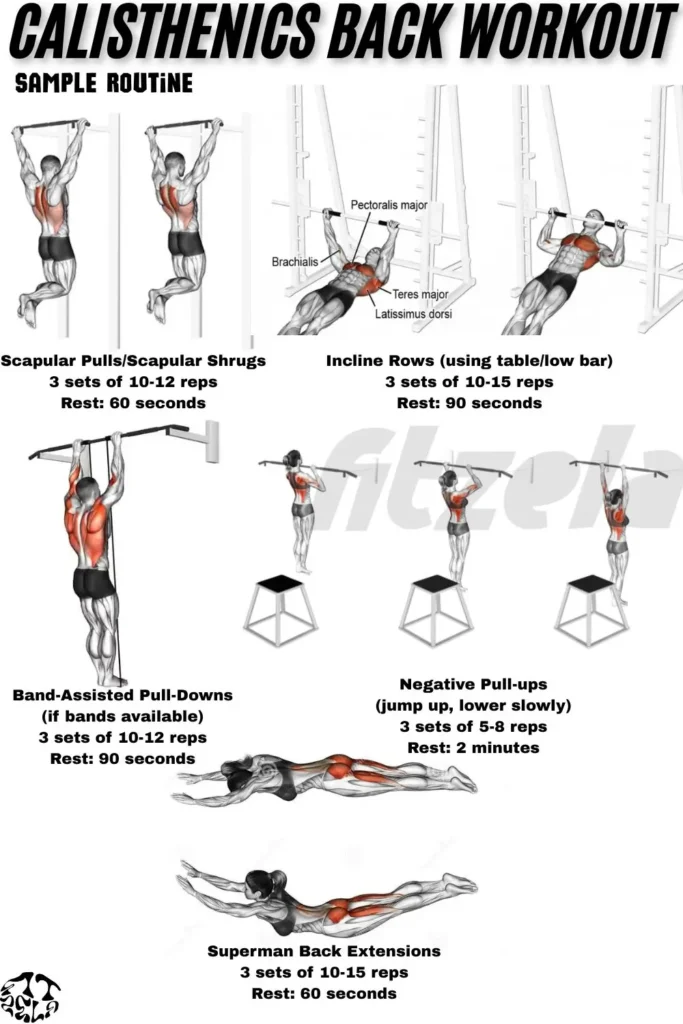
- Scapular Pulls/Scapular Shrugs
- 3 sets of 10-12 reps
- Rest: 60 seconds
- Focus on: Shoulder blade movement, hanging with straight arms
- Incline Rows (using table/low bar)
- 3 sets of 10-15 reps
- Rest: 90 seconds
- Focus on: Pulling elbows toward hips, squeezing shoulder blades
- Band-Assisted Pull-Downs (if bands available)
- 3 sets of 10-12 reps
- Rest: 90 seconds
- Focus on: Lat engagement, controlled movement
- Negative Pull-ups (jump up, lower slowly)
- 3 sets of 5-8 reps
- Rest: 2 minutes
- Focus on: 3-5 second lowering phase, controlling descent
- Superman Back Extensions
- 3 sets of 10-15 reps
- Rest: 60 seconds
- Focus on: Lower back engagement, controlled movement
Key Beginner Tips:
- Focus on the rowing movements to build foundational back strength
- Master the negative phase of the pull-up before attempting full repetitions
- Adjust the incline of your rows as you get stronger (more horizontal = more difficult)
Beginner Progression:
You’re ready for intermediate calisthenics back workouts when you can:
- Perform incline rows with your body nearly horizontal
- Complete 8-10 negative pull-ups with controlled 5-second descents
- Maintain proper form throughout all sets
Intermediate Calisthenics Back Workout
Goal: Master the pull-up, increase pulling strength and endurance, build visible back muscle.
At the intermediate level, your calisthenics back workout will focus on mastering the pull-up and its variations while building overall back development.
Sample Routine:
Frequency: 2 times per week dedicated back/pull focus.
Workout Structure:
- Pull-ups (Various grips)
- 4 sets of 5-8 reps
- Rest: 2 minutes
- Alternate between wide, shoulder-width, and narrow grips across workouts
- Australian Pull-ups (Horizontal rows)
- 3 sets of 10-12 reps
- Rest: 90 seconds
- Focus on: Pulling chest to bar, squeezing shoulder blades
- Archer Rows (One arm emphasized)
- 3 sets of 6-8 per arm
- Rest: 90 seconds
- Focus on: Unilateral control, resisting rotation
- Chin-ups (Supinated grip)
- 3 sets of 6-10 reps
- Rest: 2 minutes
- Focus on: Full range of motion, controlled descent
- Tuck Front Lever Raises
- 3 sets of 6-8 reps
- Rest: 90 seconds
- Focus on: Controlled raising and lowering, maintaining tuck position
- Bench/Chair Back Extensions
- 3 sets of 12-15 reps
- Rest: 60 seconds
- Focus on: Full extension, controlled movement
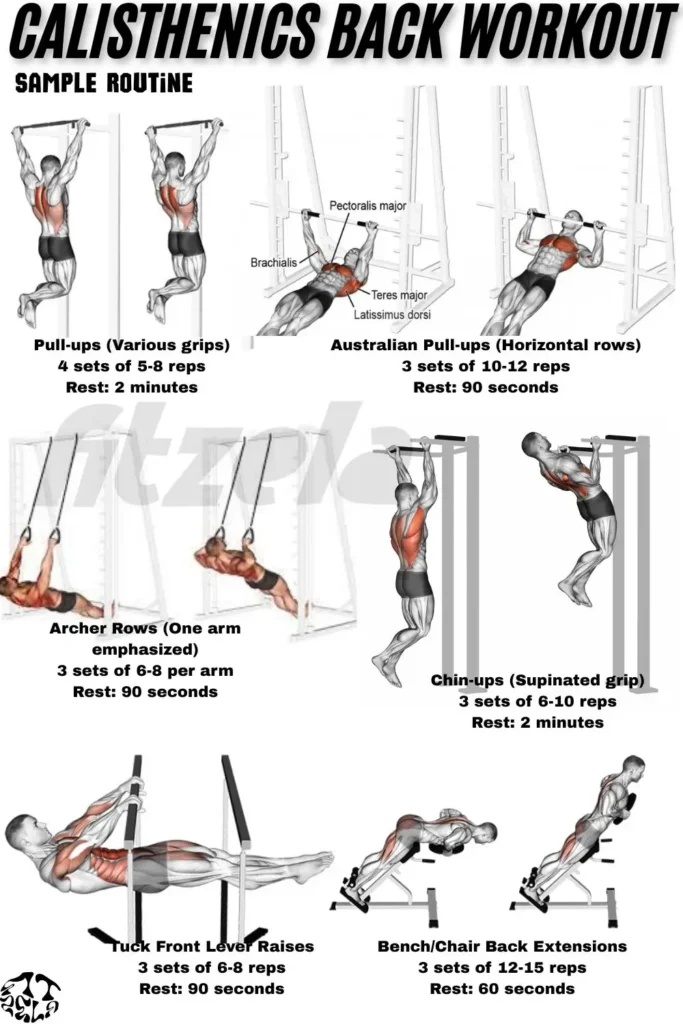
Key Intermediate Tips:
- Vary your pull-up grip to target different areas of your back
- Introduce tempo variations (e.g., 3-second lowering phase)
- Focus on quality over quantity—avoid compromising form to chase reps
Intermediate Progression:
You’re ready for advanced calisthenics back workouts when you can:
- Perform 10+ clean pull-ups
- Hold a tuck front lever for 15+ seconds
- Complete archer rows with minimal support from the assisting arm
Advanced Calisthenics Back Workout
Goal: Develop exceptional pulling power, master advanced skills, achieve significant back development.
Advanced calisthenics back workouts focus on progressive overload through challenging variations and skill development.
Sample Routine:
Frequency: 2-3 times per week with varied intensity.
Workout Structure:
- Weighted Pull-ups
- 4 sets of 5-8 reps
- Rest: 2-3 minutes
- Focus on: Clean form despite added resistance
- Archer Pull-ups
- 3 sets of 4-6 per side
- Rest: 2 minutes
- Focus on: Unilateral strength, body control
- One-Arm Pull-up Progressions
- 4 sets of 3-5 reps per side
- Rest: 2-3 minutes
- Use minimal assistance from band or other arm
- Front Lever Rows
- 3 sets of 5-8 reps
- Rest: 2 minutes
- Maintain level position during rowing movement
- Tuck Planche to Row (Advanced)
- 3 sets of 6-8 reps
- Rest: 2 minutes
- Transition from tuck planche to row position and back
- Weighted Back Extensions
- 3 sets of 10-12 reps
- Rest: 90 seconds
- Hold weight plate to chest for added resistance
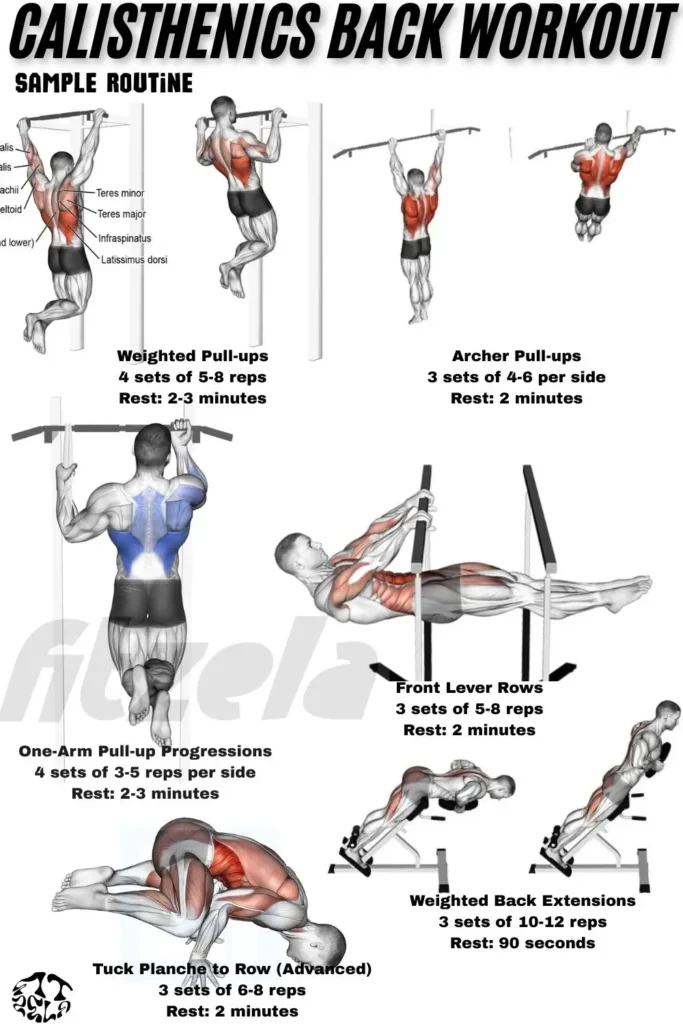
Key Advanced Tips:
- Implement periodization to manage fatigue and prevent plateaus
- Dedicate specific sessions to skill work (front lever, one-arm pull-up progressions)
- Consider adding weight carefully and progressively for continued strength gains
Advanced Programming:
At this level, consider implementing periodization:
- Strength Phase (4-6 weeks): Lower reps, higher intensity, longer rest
- Volume Phase (4-6 weeks): More reps, moderate intensity, focus on hypertrophy
- Skill Phase (2-4 weeks): Focus on technical mastery of specific movements
- Deload (1 week): Reduced volume and intensity for recovery
The Calisthenics Back Exercise Library
Vertical Pulls
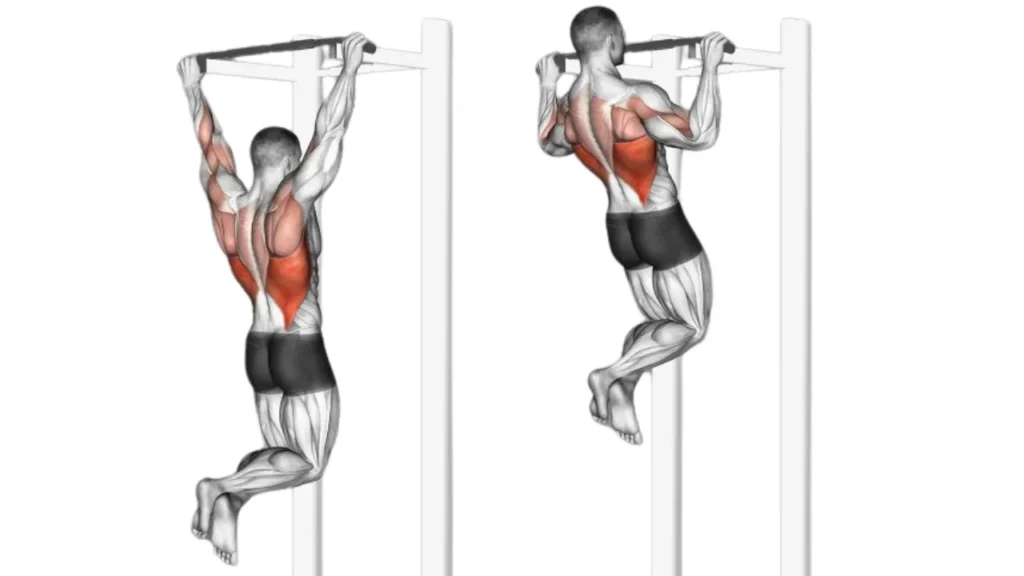
Pull-Up
Primary Muscles: Latissimus dorsi, lower trapezius, biceps
Instructions:
- Hang from a bar with hands shoulder-width apart, palms facing away
- Engage your core and slightly retract your shoulder blades
- Pull yourself up until your chin clears the bar
- Lower with control to starting position
- Repeat for prescribed repetitions
Common Mistakes:
- Using momentum/kipping
- Incomplete range of motion
- Shrugging shoulders toward ears
Regressions:
- Band-assisted pull-ups
- Negative-only pull-ups
- Jumping pull-ups
Progressions:
- Weighted pull-ups
- L-sit pull-ups
- Archer pull-ups
Chin-Up
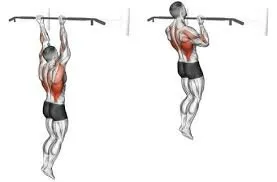
Primary Muscles: Latissimus dorsi, biceps, lower trapezius
Instructions:
- Hang from a bar with hands shoulder-width apart, palms facing toward you
- Engage your core and pull shoulder blades down and back
- Pull yourself up until chin clears the bar
- Lower with control to starting position
Common Mistakes:
- Overusing biceps instead of engaging back
- Excessive swinging
- Poor shoulder position
Regressions/Progressions: Similar to pull-up variations
Horizontal Pulls

Australian Pull-Up (Bodyweight Row)
Primary Muscles: Middle trapezius, rhomboids, posterior deltoids, latissimus dorsi
Instructions:
- Position yourself under a horizontal bar or table with feet extended
- Grasp the bar with hands slightly wider than shoulder-width
- Keep body straight from head to heels
- Pull chest toward the bar by driving elbows back
- Lower with control to starting position
Common Mistakes:
- Sagging hips
- Insufficient range of motion
- Flared elbows
Regressions:
- More upright body angle
- Bent knees instead of straight legs
Progressions:
- Feet elevated rows
- Wide grip rows
- Archer rows
Archer Row

Primary Muscles: Latissimus dorsi, rhomboids, rear deltoids (with increased unilateral focus)
Instructions:
- Set up as for an Australian pull-up
- Extend one arm straight to the side
- Pull up using primarily the bent arm
- Lower with control and switch sides
Common Mistakes:
- Rotating the torso excessively
- Using momentum
- Insufficient range of motion
Isometric Holds
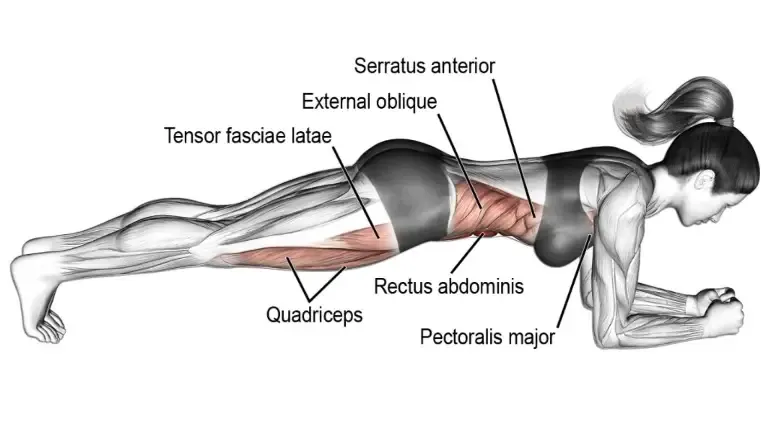
Front Lever Progressions
Primary Muscles: Latissimus dorsi, entire posterior chain
Tuck Front Lever Instructions:
- Hang from a bar with palms facing down
- Pull shoulder blades down and back
- Lift knees toward chest while raising body to horizontal
- Hold position with body parallel to ground
- Maintain for prescribed time
Progressions:
- Tuck front lever (easiest)
- Advanced tuck (knees further from chest)
- Single leg extended
- Straddle front lever
- Full front lever (hardest)
No Pull-Up Bar? No Problem! Effective Back Training Alternatives
Don’t let equipment limitations stop your calisthenics back workout progress:
Doorway Rows:
- Position a folded towel over each side of a sturdy door
- Grasp towels and lean back at an angle
- Pull yourself toward the door, engaging your back muscles
Table or Counter Rows:
- Position yourself under a sturdy table
- Grasp the edge and perform rows
- Adjust feet position to modify difficulty
Resistance Band Pulldowns:
- Secure a resistance band to a high point
- Kneel or sit and perform pulldown motion
- Focus on engaging lats throughout the movement
Floor Back Extensions:
- Lie face down on the floor
- Lift chest and legs simultaneously
- Hold briefly at the top position
- Lower with control
Door Frame Pull-Ups:
- If your door frame is sturdy and wide enough
- Place hands on frame and perform pull-ups
- Test carefully before applying full bodyweight
Structuring Your Calisthenics Back Training
Integrate your calisthenics back workout into your overall training schedule:
Full Body Split: Include 2-3 back exercises in each session, 3 times per week
- Example: Pull-ups paired with lower body, rows paired with push movements
Upper/Lower Split: Dedicate half of upper body days to back training
- Example: Pull-ups and horizontal pulls on upper days (2x weekly)
Push/Pull/Legs: Dedicate entire pull days to back, biceps and rear delts
- Example: Comprehensive back workout 2x weekly
Remember to balance pushing and pulling movements to maintain shoulder health and proper posture.
Warming Up & Cooling Down for Your Back
Before any calisthenics back workout, prepare your muscles and joints:
Dynamic Warm-Up Movements:
- Cat-cow stretch (10-15 reps)
- Thoracic rotations (8-10 per side)
- Arm circles (10 forward, 10 backward)
- Scapular wall slides (10-12 reps)
- Light band pull-aparts (15-20 reps)
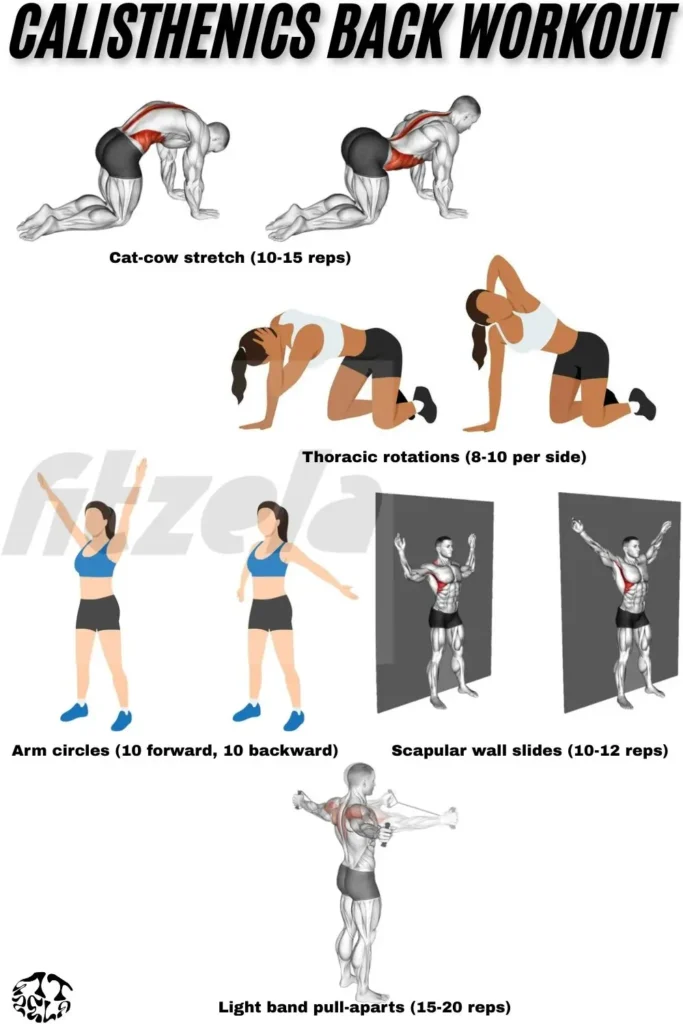
Post-Workout Stretches:
- Child’s pose (30-45 seconds)

- Lat stretch (30 seconds per side)
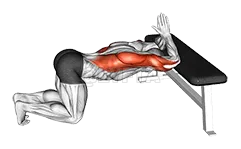
- Threading the needle (rotation stretch, 30 seconds per side)
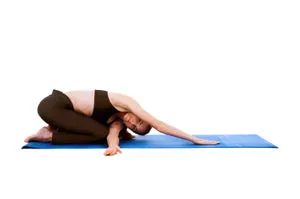
- Doorway chest stretch (to counter the pulling work, 30 seconds)
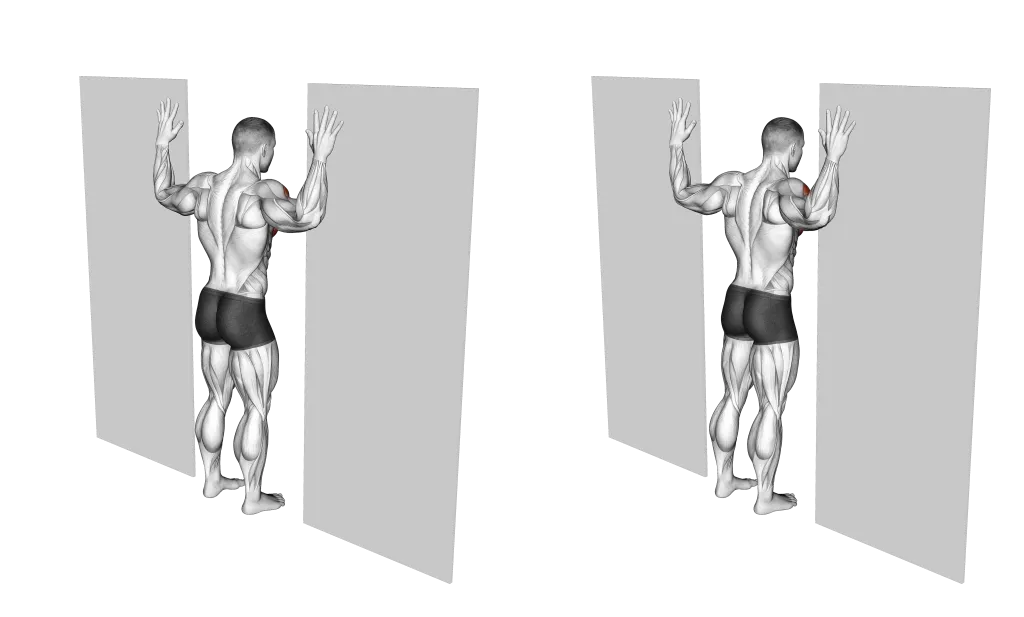
A proper warm-up enhances performance and reduces injury risk during your pull up workout sessions.
Frequently Asked Questions (FAQ)
Q: Can you build a big back with calisthenics? A: Absolutely! While the stimulus differs from weighted exercises, progressive calisthenics back workouts can build significant muscle mass and strength. The key is consistent progression through increased difficulty, not just higher repetitions.
Q: How long does it take to see back results from calisthenics? A: Most beginners notice improved definition and strength within 4-6 weeks of consistent training. More visible muscle development typically becomes apparent after 8-12 weeks, assuming proper nutrition and recovery.
Q: What if I can’t do a single pull-up? A: Start with the beginner calisthenics back workout focusing on negative pull-ups, scapular pulls, and Australian rows. These build the foundational strength needed for your first pull-up. Consistent practice with these exercises typically leads to a first pull-up within 4-12 weeks.
Q: Are bodyweight rows effective? A: Bodyweight rows (Australian pull-ups) are extremely effective for back development. They target the middle back muscles (rhomboids, mid-traps) that are crucial for posture and overall back development. They’re also an excellent preparatory exercise for pull-ups.
Q: How often should I train my back with calisthenics? A: For optimal results, train your back 2-3 times per week with at least 48 hours between intense sessions. This frequency provides sufficient stimulus for growth while allowing adequate recovery.
Conclusion: Start Building Your Calisthenics Back
A well-developed back is not only aesthetically impressive but functional and essential for overall strength and posture. With this comprehensive calisthenics back workout guide, you now have all the tools needed to build impressive back strength and muscle without weights.
Remember these key principles as you implement your calisthenics back workout routine:
- Focus on form before chasing repetitions
- Progress systematically through leverage, tempo, and exercise variations
- Be patient and consistent—back development takes time
- Balance your pulling work with appropriate pushing exercises
Start with the workout that matches your current ability level, track your progress, and gradually work through the progressions. Whether your goal is your first pull-up or advanced front lever variations, consistent application of these principles will get you there.
Take action today: Choose your starting workout, schedule your first three sessions this week, and begin transforming your back through the power of calisthenics!


